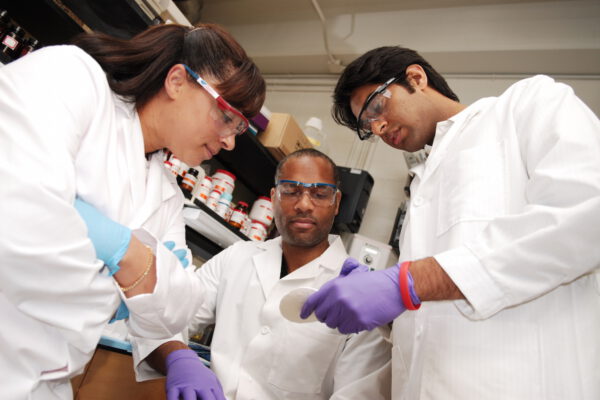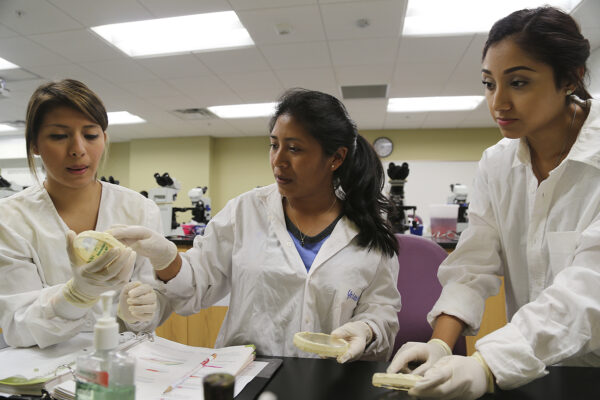By Ebony O. McGee
In 2012, soon after I started my tenure-track job at Vanderbilt University, I became laser focused on understanding and eventually changing one shocking statistic: only 2.5 percent of all tenured or tenure-track engineering professors at U.S. institutions of higher education were Black professors. Eight years later, after some well-funded and well-intentioned programs directly targeting the racial diversification of STEM faculties, that statistic is now 2.4 percent. Moreover, from 2009 to 2018, engineering faculty hires increased by 4,250; only 79 of those new faculty hires were Black engineering professors. Out of the 298 engineering schools in the United States, more than one-third have no Black tenured or tenure-track engineering professors. This means that a Black engineering student could earn a PhD in the field and never have a professor who looks like them.
I am a Black woman associate professor of diversity and STEM education. I am also a “recovering” engineer, still feeling the racial battle fatigue I experienced in my engineering jobs. I used to feel guilty about leaving engineering because my family and larger community saw me as a Black success story. But when I quit the field to get my PhD, I devoted a great deal of time and energy to understanding why I had been so miserable at work. I was making good money, lived in a city I enjoyed, and had a good group of homies, but still I dreaded Mondays and all the other days of the work week.
Slowly, through the process of researching racial and STEM identities, race, and racism, I came to discover that my situation was not unique. For Black or brown people in STEM, constant race-related stress and anxiety are the norm rather than the exception. In part, that’s because STEM environments have normalized inequality and racism. So although being a Black or brown high achiever in STEM is billed as a preeminent success, the consequences are often psychologically brutal.
The time has come to identify the unhealthy structures, practices, and policies that underlie current STEM environments. Only then will leaders start remedying the faults in their institutions that have led to the appalling underrepresentation of people of color in STEM.
One of the biggest barriers is STEM culture and curricula, which has created an inhospitable environment for students, faculty, and employees of color. The lack of racial diversity and marginalized groups in STEM is rooted in structures of racism that deplete the field of potentially game-changing contributions from people of color. We’ll never know what they might have done because STEM education discourages the participation of anyone who isn’t white, male, heterosexual, able-bodied, and middle-to-upper class (with some Asians being the exceptions).
My own and others’ research has shown that the economic, educational, political, and social ideologies that give white people an advantage produce chronic adverse outcomes for students of color. One consequence of having so few people of color in STEM fields and an overinflation of white male norms and values is race-based stereotyping, biases, and aggressions against students and faculty of color. Racialized bias and ideologies about who is competent and who is not permeate mathematics, science, and every technical field, to the detriment of U.S. scientific innovation and technological advancement. Those who are not involved in these fields—and especially people of color—may be unaware of the stereotypes that attach to racially minoritized people, but my many hundreds of research participants have testified eloquently to their existence and to the resulting bruising.
Unfortunately, the common solution is to ask students and faculty of color to just get used to the injustice by enacting unrelenting levels of grit. Instead of providing supports to counter racist, sexist, and classist STEM environments, advisers recommend adopting an extra layer of self-imposed resilience. But asking people of color to augment their already resilient selves to combat structural racism and other isms is just another form of oppression. Failure, therefore, becomes the sole responsibility of the individual, who wasn’t tough or determined enough to see it through. Meanwhile, STEM education and businesses blithely ignore the racialized practices, policies, and ideologies that force Black and brown students to maintain impossible levels of psychological toughness and to stifle basic aspects of their identities in order to advance their education.
STEM departments cannot workshop their way out of this powerful fact: the presence or absence of underrepresented STEM faculty of color can affect the recruitment, training, and success of STEM students of color for generations. My research has demonstrated that underrepresented STEM faculty of color offer an unyielding passion for their disciplines, a sense of responsibility to serve marginalized peoples and society, the brilliance to reinvent their fields, research opportunities for students of color, and role models for students of color.
STEM departments should recognize racially diverse faculty as critical to the STEM professions. Specifically, faculty are instrumental for discovering, promoting, and disseminating advancements in technology. They are also fundamental for building capacity by training a future diversified workforce of STEMers. Despite some of the best intentions by researchers, practitioners, and politicians, academia has failed to reflect the nation’s demographics. STEM will not fully thrive until it aims to understand and address this challenge.
The secondary goal would be to respect, value, and properly financially support the work of Black STEM staffers and related administrators. Folks who run and sustain minoritized STEM programs (also known as minority engineering programs), STEM internship coordinators and career counselors, and administrators focused on diversifying the field should be much-admired, as their efforts and their mentoring retain far more students of color than STEM departments realize.
Empowering underrepresented STEMers requires more than reciting basic principles and the virtues of mentoring—it must get down to the nitty-gritty. My recent book, Black, Brown, Bruised: How Racialized STEM Education Stifles Innovation, argues for the creation of equitable and inclusive environments in which underrepresented students and faculty of color feel welcome, can be open about who they are, and can thrive in their chosen disciplines. I expose the need for unique supports designed for underrepresented students of color in STEM—supports that ensure more than mere survival, supports that enable these students to flourish and feel like valued members of their disciplines. Examples include developing race-conscious mentorship and programming as a critical component of STEM education (especially in graduate school, where mentoring programs are practically nonexistent); providing professional development to cultivate cultural competence in STEM faculty; recognizing the time-intensive nature of mentoring and having departments compensate faculty for that time; and supporting the writing of fellowship and funding agency proposals and requests for foundation support, to name a few.
These actions provide a race-conscious acknowledgement of the challenges underrepresented STEMers of color endure and institutions’ and departments’ willingness to confront their own racially discriminating, stereotyping, and hostile environments. Solutions do not involve fixing the underrepresented student of color; rather, the burden for change is on STEM departments and their racialized cultures.
If you have any questions or comments about this blog post, please contact us.


